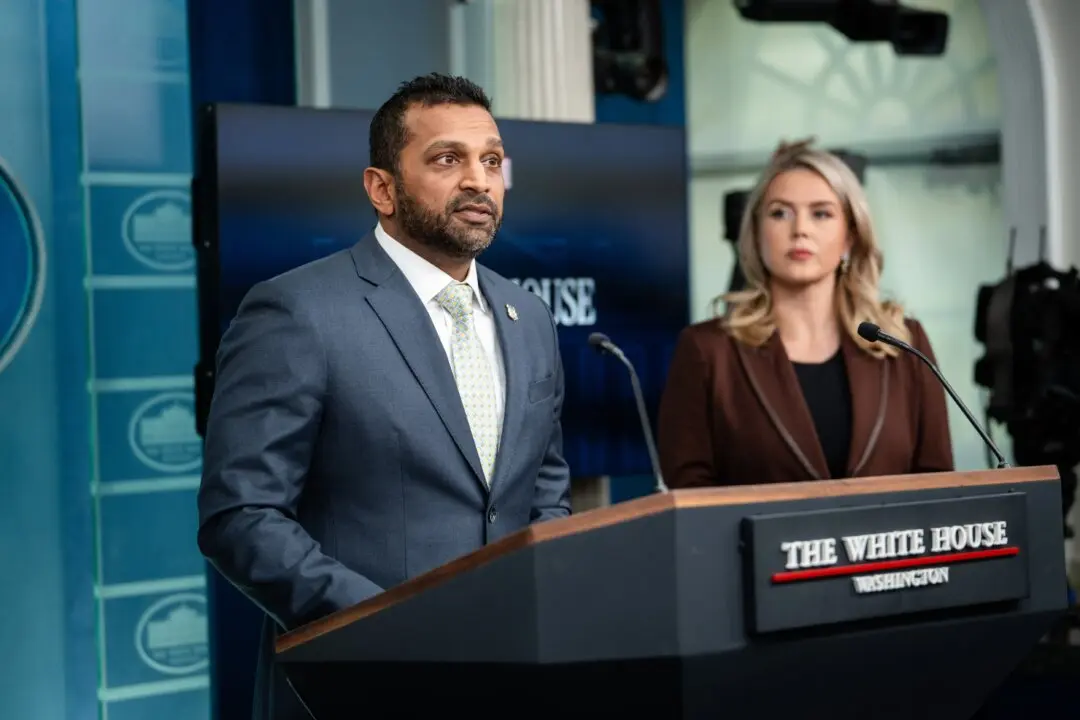NEW YORK—The QueensWay project may still be in its earliest stage, but it has already sparked a larger conversation about the future of the neighborhoods surrounding the long abandoned Rockaway Beach rails.
With Manhattan’s skyrocketing real estate prices, businesses and home buyers continue to move to the outer boroughs—but they are going to areas like popular Brooklyn neighborhoods and the evolving waterfronts Mayor Michael Bloomberg has paid so much attention to.
Meanwhile, suburban neighborhoods like Ozone Park or Woodhaven haven’t exactly become the next hotspot, and they may not want to be.
Community Efforts
The abandoned Rockaway Beach rails run down three-and-a-half miles from Rego Park through Forest Hills, Forest Park, Richmond Hill, Woodhaven, and terminate at Ozone Park. The rails have been out of use for over 50 years. In some places on the track have patches of greenery, in others the tracks are rusty and littered. In still others, homeless people have encamped.
“We’re tired of it sitting there and it being useless, [so we] said let’s make something out of it,” said Travis Terry, one of the founding members of Friends of the QueensWay.
Terry, who lives in Forest Hills, said many community members had independently been advocating for change for over a decade, but it was about three years ago that they came together to form the organization “to try to make something spectacular happen.”
The project is often compared to the HighLine on the west side of Manhattan, which has been both praised and blamed for the development activity in Chelsea, the Hudson Yards, and so on. Terry knows they’re not the same project, but the group aims to replicate the level of commitment Friends of the HighLine put in to make their own project happen for the community.
Late last year, Governor Andrew Cuomo awarded Friends of the QueensWay a $467,000 grant and combined with the nearly $1 million the group raised, a comprehensive study is now underway.
“We are well aware of the fact that having an idea and advocating for it is important but the decision here has to be driven by data, and fact, and information, and planning,” Terry said.
The group has partnered Trust for Public Land, a national organization which has created a number of greenways. Friends of the QueensWay brought on WXY Urban Architecture + Design and dlandstudios to conduct the study. Community workshops recently wrapped up, and they aim to release preliminary results and designs by March.
At the same time, the Queens College Urban Studies Department is doing a feasibility study on the impacts and costs of various uses for the rail line, including returning them to active Long Island Rail Road use again.
Need for Transportation
In the Metropolitan Transportation Authority’s Capital Needs Assessment 2015-2034, the Rockaway Beach Branch was mentioned as a possible option and that note was taken encouragingly by those advocating for having the rails restored as transportation.
The study is being led by professor Leonard Rodberg and will be complete by the end of next summer.
The assessment noted the “significant population increases in Queens” and the need for transportation in the eastern neighborhoods.
MTA is currently conducting a travel survey for opening an LIRR branch in Elmhurst, but the only mention of the Rockaway Beach Branch was that utilizing the Right of Way on those abandoned rails would be considerably less expensive than constructing new rails. Among those advocating for transportation, there are some calling for an extension of the R subway line as well, which could be even more costly.
The study by Queens College is funded by student grants. State assemblyman Phillip Goldfeder, who has been pushing for more public transportation in the area for years, has said his office is able to allocate up to $100,000 more to the study if needed. Goldfeder has said over 2.3 million Queens residents would benefit from the extension.
Goldfeder stated that commuters around the abandoned tracks could reduce their trip time to Manhattan by about an hour, from 100 minutes to 40 minutes.
Mixed Bag
Like any large project, the responses from affected community members were fairly mixed. According to Goldfeder’s chief of staff Angelica Katz, who attended all the workshops, residents above Atlantic Ave. were supportive of a park, and residents living south of Atlantic Ave. wanted the rails restored.
The QueensWay study is looking at transportation connections to campuses and subway stations via the greenway, but not at the restoration of rails.
Some other residents were rather ambivalent. The Woodhaven Residents’ Block Association is holding a meeting Dec. 9 to allow residents to voice their ideas and concerns in another public forum, but the association itself hasn’t decided to support or go against either restoring the rails or creating a park.
Association president Ed Wendell said, speaking personally, he was wary of creating another greenway because there is one in Forest Park that has not at all been maintained. Additionally, he doesn’t feel the rails themselves are a bother.
“It was a problem many years ago, but it’s not a problem now,” Wendell said.
Robert Hammond, co-founder of the High Line, said he had run into clashing community opinions when advocating for the High Line as well, since these are such sprawling projects.
“Sometimes people don’t want their neighborhoods connected to other neighborhoods,” Hammond said at his farewell talk on Dec. 5.
“[Terry] was really helpful to us in our early stages so we have been talking to them [Friends of the QueensWay],” Hammond said.
Some people had wanted the High Line restored as LIRR as well, but “one of the advantages we had for us was that there were not a lot of people who lived in the neighborhood.”
Expectations and Rezoning
The discussion about the future of the Rockaway rails has become more pertinent as communities expect more development and rezoning.
Rezoning in Ozone Park is in progress to keep some neighborhoods zoned for one or two story residential buildings in some corridors, and mixed-use buildings in others. Woodhaven community members are meeting to set clear goals as well, so as to not be caught off guard by developers, according to the Project Woodhaven mission listed on its website.
Queens Borough President-Elect Melinda Katz announced a nine-point economic development plan last month with mentions of rezoning. In addition to the attention she wants to give to the developing tech hub around Long Island City, Katz said she wanted to work with City’s Planning Committee to identify more sites for redevelopment. Katz said areas like the Rockaways, East Elmhurst, and Ozone Park could benefit from long-overdue rezoning.





